The monkey park in Iwata-Yama in Kyoto
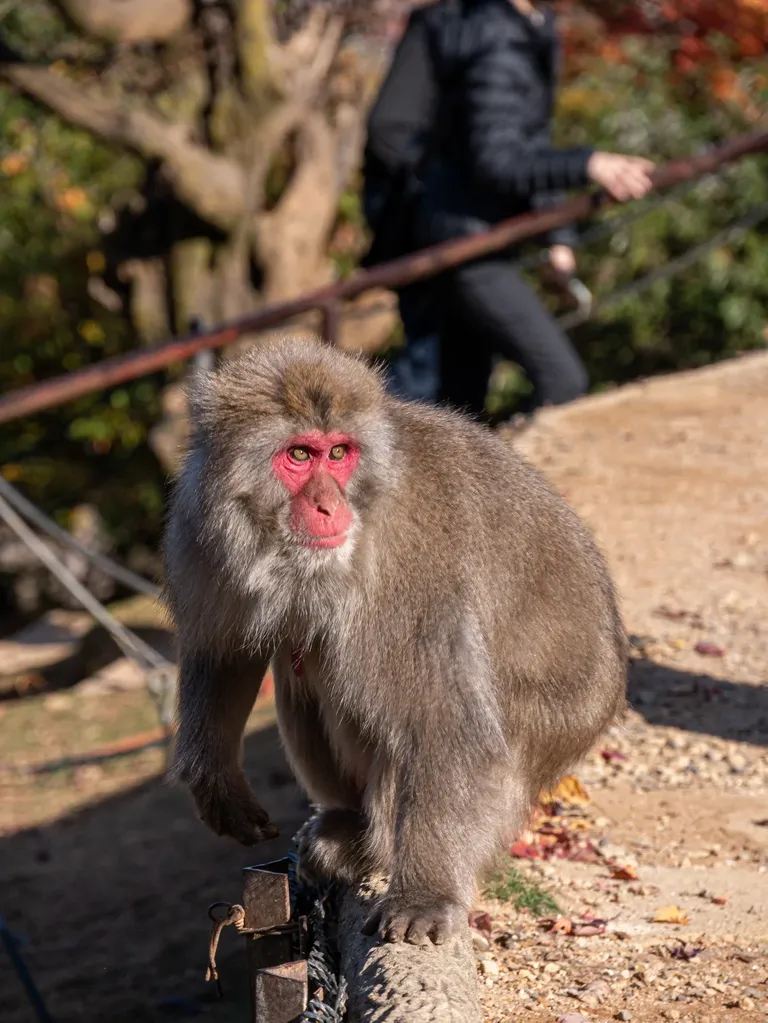

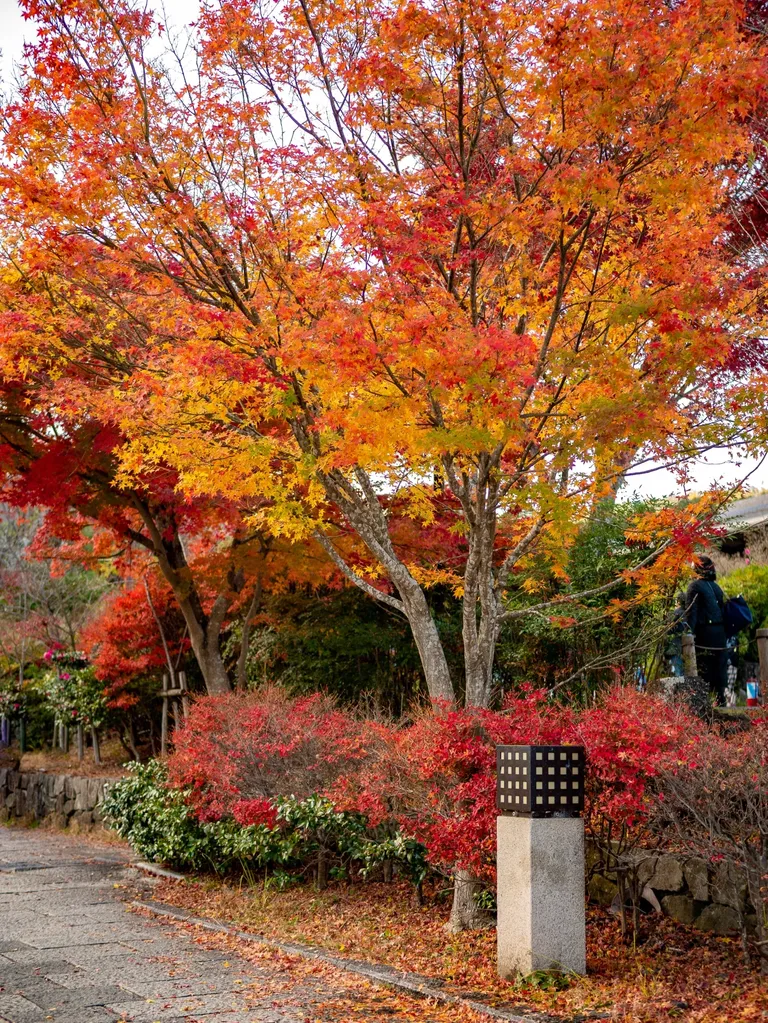
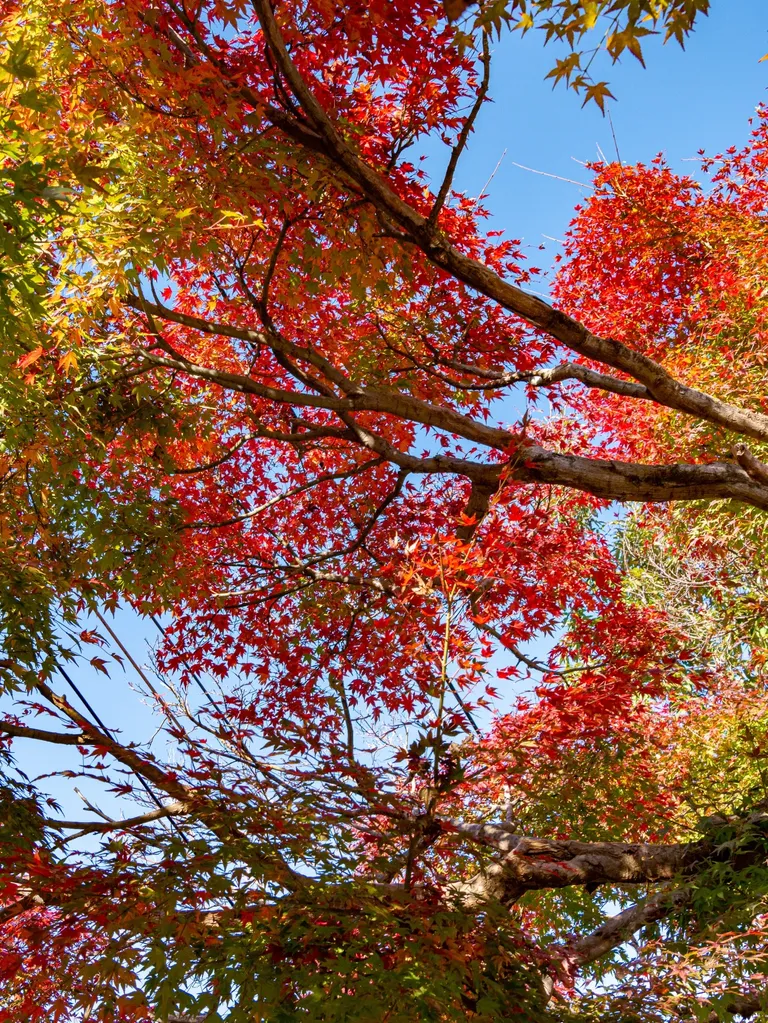
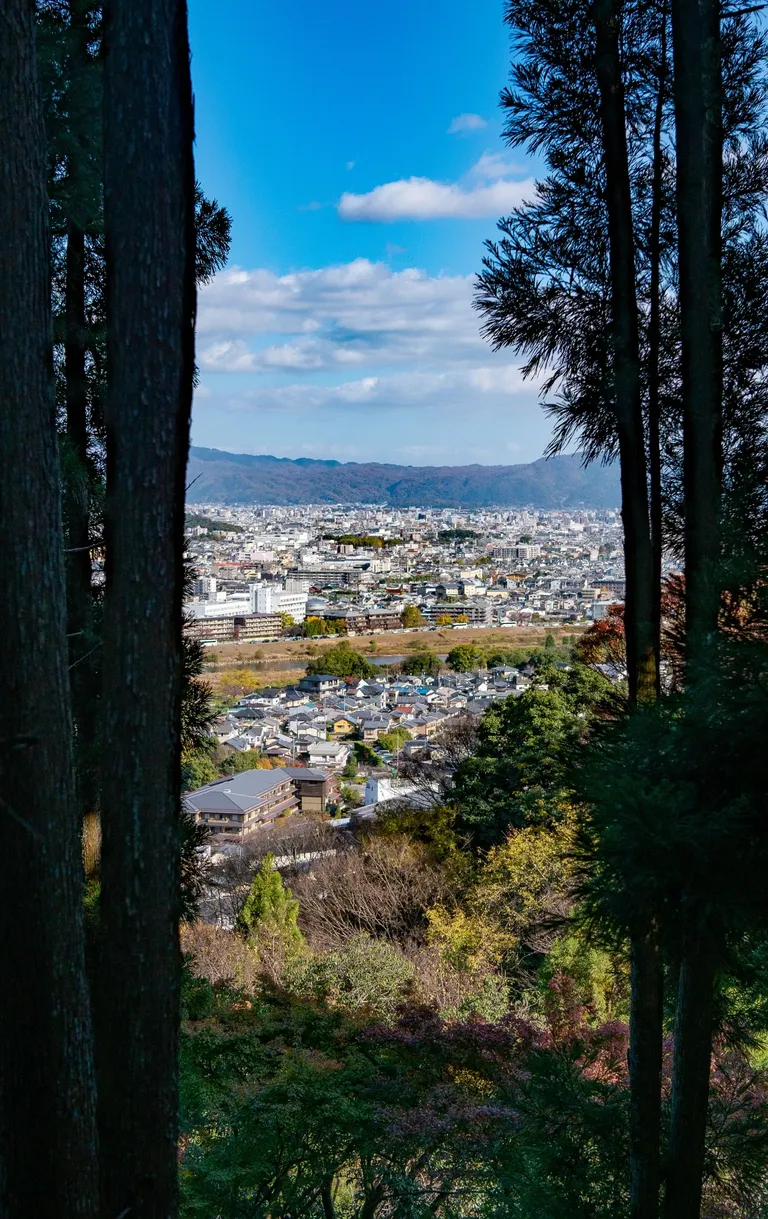
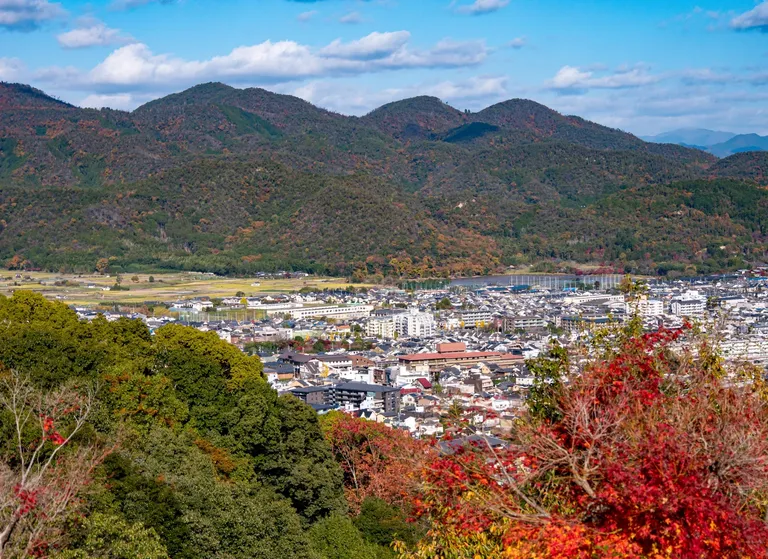
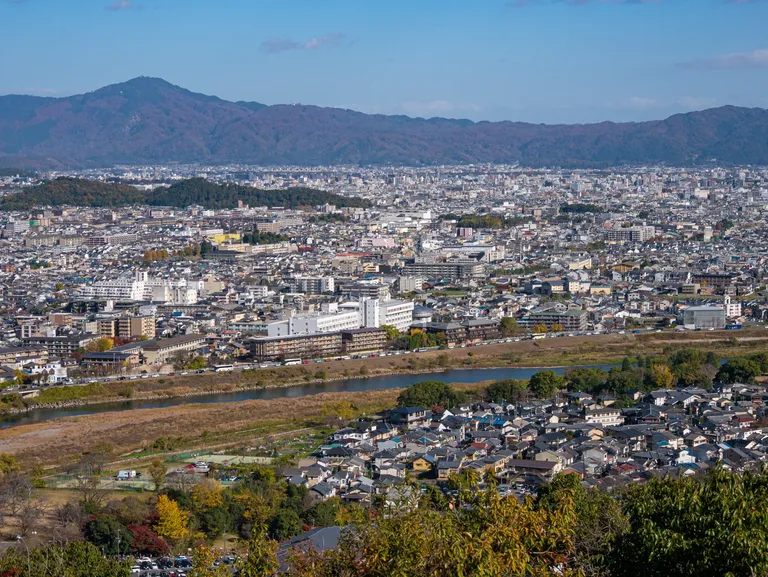
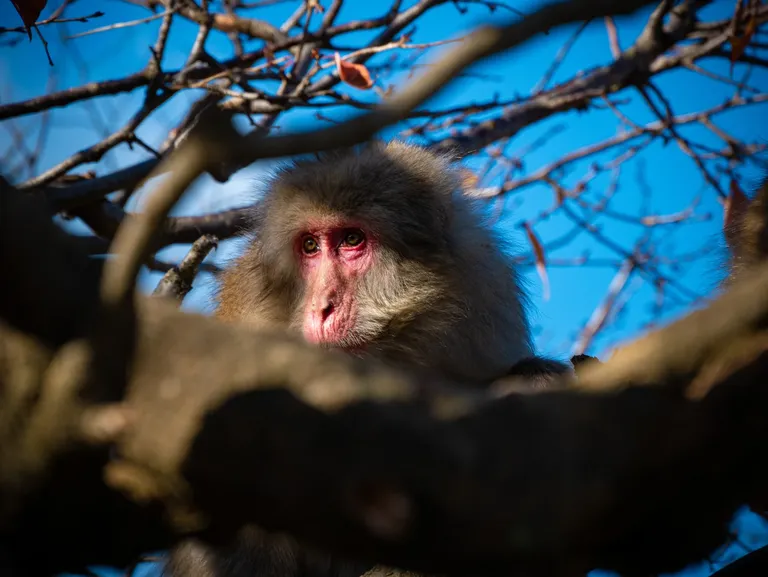
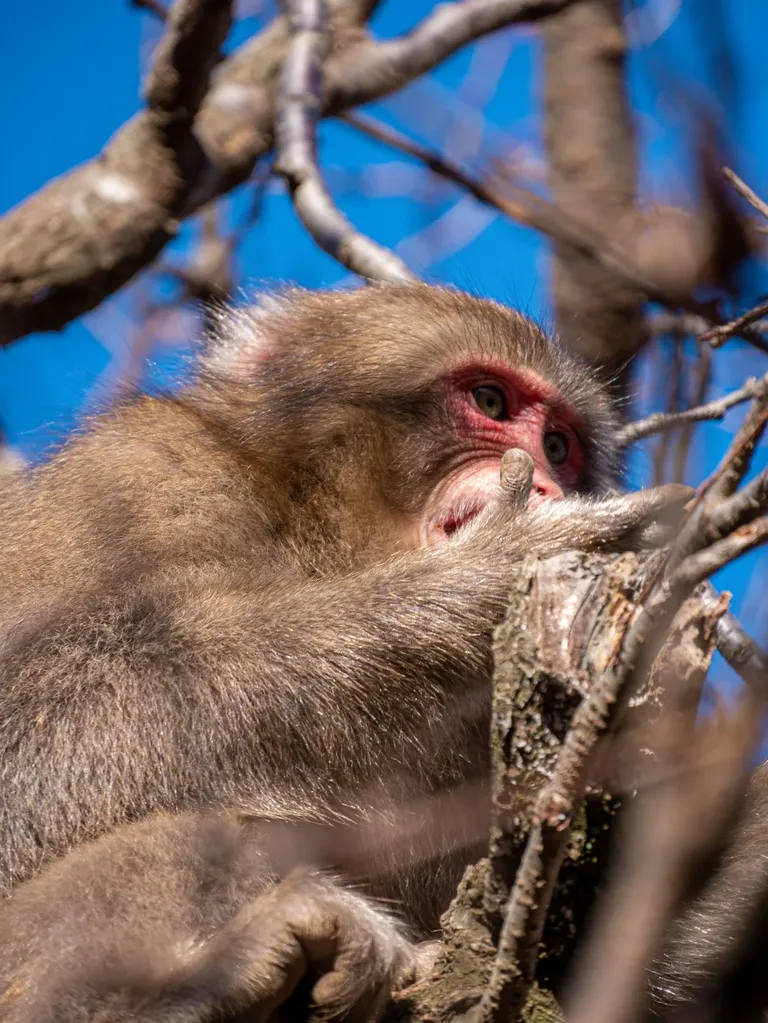
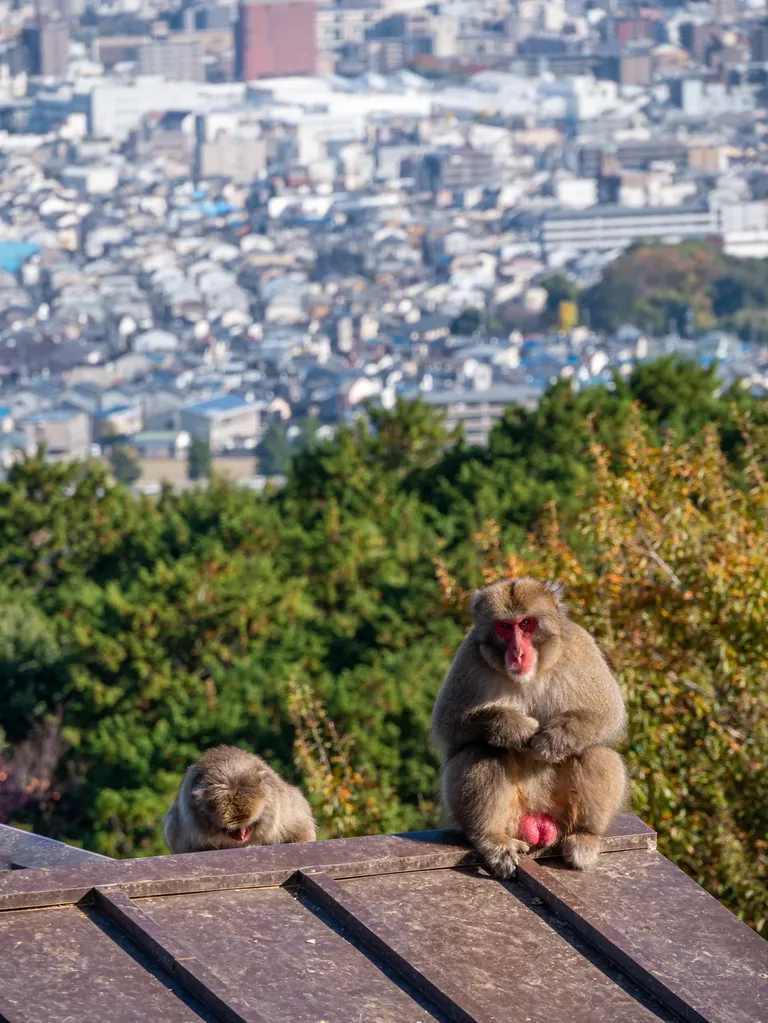
Hello everyone,
Today, I would like to share some pictures of Japanese monkeys taken in Iwata-Yama park in Kyoto. Indeed, as soon as you go a few kilometers away from the center of Kyoto, you immediately find yourself in the mountains and in the forest. There are very famous places like the bamboo forest of Arashi-Yama (there will probably be a post about it by the way ^^), and not far from there, the monkey forest.
To be exact, they are Japanese macaques (Macaca fuscata), a species endemic to Japan. In English, they are sometimes called "snow monkeys", because they are the monkeys whose natural habitat is the most northern. As a result, they have a thick coat of fur and are known to bathe in hot springs in winter. There would be a lot to say about these monkeys. For example, the diffusion and transmission within a social group of a discovery made by an individual were observed. It was a female who started to wash sweet potatoes before eating them.
The entrance to the park is at the level of the river and costs 600 Y (about 4 euros). Then you have to take the small hiking path (about 20 min, so accessible even to old people and young children) to reach the top of the hill and the area where the monkeys are.
I'm talking about a park and a paid entrance, but you have to know that the monkeys are actually free. There are no fences or cages, just an area set up to observe them. At the top, there is a hut with barred windows, inside which you can buy pieces of fruit (apple, banana ...) to feed the monkeys, but only from inside. For safety, it is forbidden to approach within 2 meters of the monkeys and to feed them or show them food outside the hut. It is also advised not to look at them in the eyes, as this is a sign of provocation.
In the observation area, there are several dozens of monkeys roaming freely, and it is not uncommon to see one running almost between our legs! They remain wild animals, but they are used to the presence of humans and usually ignore them or turn their backs. This is a very personal point of view, but I think that cohabitation goes well precisely because they are not captive. Indeed, if they get tired of it, they can go away to the mountains, where nobody will be able to find them.
This same area also offers a magnificent view over Kyoto, a dream place for photographers!
That's it for me for today, I hope you enjoyed these pictures of Iwata-Yama and its Japanese macaques!
Thanks for reading to the end, and as always, feel free to leave a comment!
Version Fr :
Bonjour à tous,
Aujourd'hui, je voudrais partager avec vous des photos de singes japonais prises dans le parc d'Iwata-Yama à Kyoto. En effet, dès lors que l'on s'éloigne de quelques kilomètres du pleins centre de Kyoto, on se retrouve immédiatement dans les montagnes et dans la forêt. Il y a des endroits très connus comme la forêt de bambou d'Arashi-Yama (il y aura probablement un post à ce sujet d'ailleurs ^^), et non loin de là, la forêt des singes.
Pour être exacte, il s'agit de macaques japonais (macaca fuscata), une espèce endémique au Japon. En anglais, ils sont parfois appelés "singes des neiges ", car ce sont les singes dont l'habitat naturel se situe le plus au nord. En conséquence, ils ont un pelage bien fourni et ils sont connus pour se baigner dans les sources chaudes en hiver. Alors il y aurait beaucoup à dire sur ces singes puisque c'est avec cette espère qu'a été observée la diffusion et la transmission au sein du groupe d'une découverte faite par un individu. Pour la petite histoire, il s'agit d'une femelle ayant commencé à laver des patates douces avant de les manger.
L'entrée du parc se fait au niveau de la rivière et coûte 600 Y (soit environ 4 euros). Il faut ensuite emprunter le petit chemin de randonnée (environ 20 min donc accessibles même aux personnes âgées et aux jeunes enfants) pour accéder en haut de la colline et à la zone où se trouvent les singes.
Alors, je parle de parc et d'entrée payante, mais il faut savoir que les singes sont en réalité en liberté. Il n'y a pas de barrière ni de cages, simplement une zone aménagée pour les observer. Au sommet, se trouve une cabane aux fenêtres grillagées, à l'intérieur de laquelle on peut acheter des bouts de fruits (pomme banane) pour nourrir les singes, mais uniquement depuis l'intérieur. Pour la sécurité de tous, il est, en effet, interdit d'approcher à moins de 2 m des singes, de les nourrir ou de leur montrer de la nourriture à l'extérieur de la cabane, et même de les regarder dans les yeux, car il s'agit d'un signe de provocation.
Sur la zone d'observation, il y a plusieurs dizaines de singes évoluant en liberté et il n'est pas rare d'en voir un passer en courant presque entre nos jambes ! Ils restent des animaux sauvages, mais ils sont habitués à la présence des humains et se contentent de les ignorer ou de leur tourner le dos. C'est un point de vue tout à fait personnel, mais je pense que la cohabitation se passe d'autant mieux qu'ils ne sont pas captifs. En effet, s'ils en ont assez, ils peuvent s'éloigner dans la montagne, là où personne ne pourra aller les chercher.
Cette même zone offre également un point de vue magnifique sur la ville de Kyoto, un endroit rêvé pour les photographes !
Voilà, ce sera tout pour moi pour aujourd'hui, j'espère que vous avez apprécié ces photos d'Iwata-Yama et de ses macaques japonais !
Merci d’avoir lu jusqu’au bout et comme toujours, n’hésitez pas à laisser un commentaire !
For the best experience view this post on Liketu
Congratulations @emeraldtiger! You have completed the following achievement on the Hive blockchain And have been rewarded with New badge(s)
Your next target is to reach 70 posts.
Your next target is to reach 1500 upvotes.
Your next target is to reach 800 comments.
Your next target is to reach 400 replies.
You can view your badges on your board and compare yourself to others in the Ranking
If you no longer want to receive notifications, reply to this comment with the word
STOPCheck out the last post from @hivebuzz:
Support the HiveBuzz project. Vote for our proposal!
Thanks for the support!
Wow, very beautiful. I just went there last week. A lot of people there.
Thanks a lot!
Haha, yes I guess that was the best weekend to see the momiji in the area, it was really crowded!
The leaves of the trees in the place you visited almost reflect the most beautiful colors of autumn to us. Thank you for these photos.
Thanks a lot!
It is true that autumn leaves are very beautiful in Kyoto!
Congratulations @emeraldtiger!
You raised your level and are now a Minnow!
Check out the last post from @hivebuzz:
Support the HiveBuzz project. Vote for our proposal!
Superbe photos ,.la couleur des arbres est magnifique
Merci bien!
Je prépare quelques photos pour un autre article aux couleurs de l'automne !
Super, certainement jolies, impatiente de les voir.